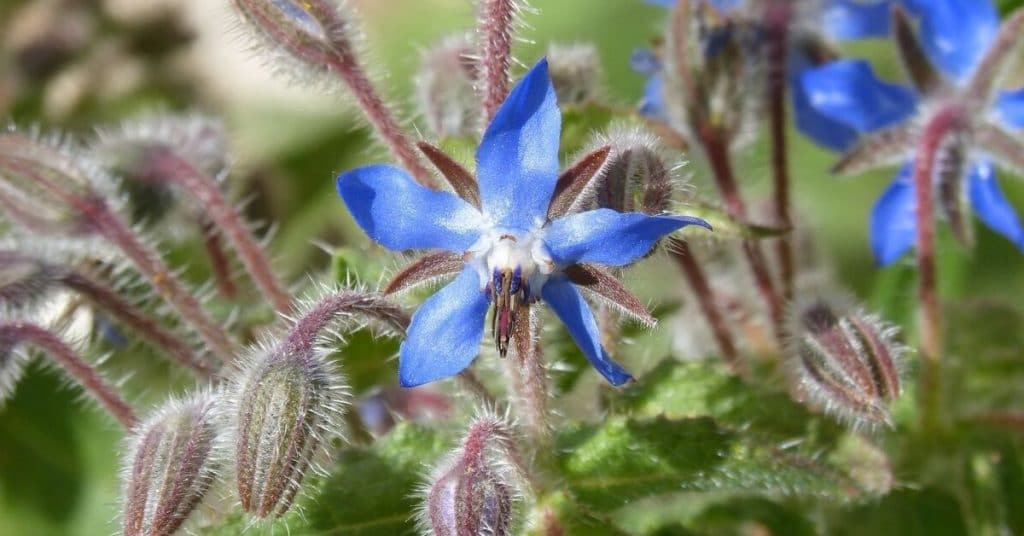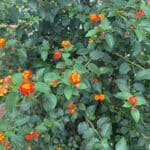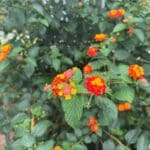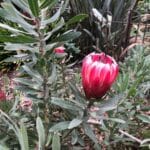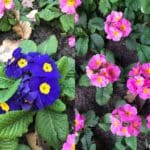Borage is a commonly grown plant found in many kitchen gardens throughout Europe and North America. It can be grown as decoration and has historically been consumed in parts of salads and drinks.
Borage Facts
The scientific name of Borage is Borago officinalis. This plant is also known as starflower, due to the shape of its flowers. The name Borage, which comes from the Latin Borago may come from “corago,” with “cor” meaning “the heart” and “ago” meaning “I bring.” It references the cordial and pleasant effect the plant has, decreasing stress.
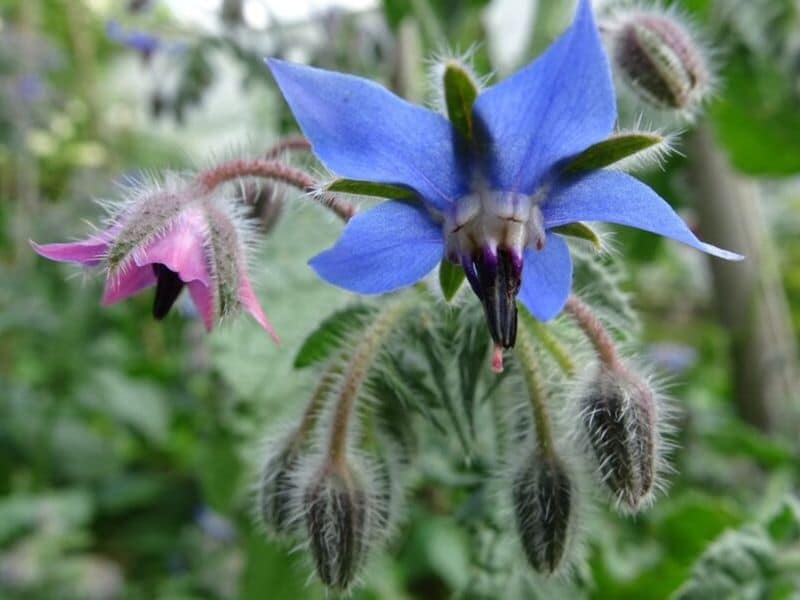
Fun Facts
When you pick the leaves of Borage, you should do so while they are young and tender. These can then be used in dishes such as salads. You should be careful with picking the leaves though, as some people are prone to contact dermatitis from touching them.
You can freeze the flowers of the Borage plant but not the leaves. They can then be used in drinks such as Borage lemonade. The flowers can also be preserved by crystallizing them. The leaves cannot be preserved and must be used fresh.
A History of Borage
Borage has been used for many years as a foodstuff. It is natively grown in areas throughout the Mediterranean, although it has spread throughout Europe and North America.
During the early nineteenth century, the plant was used in salads, with young leaves considered especially good in them. Many people took the blossoms and preserved them by candying them.
What Does Borage Flower Look Like?
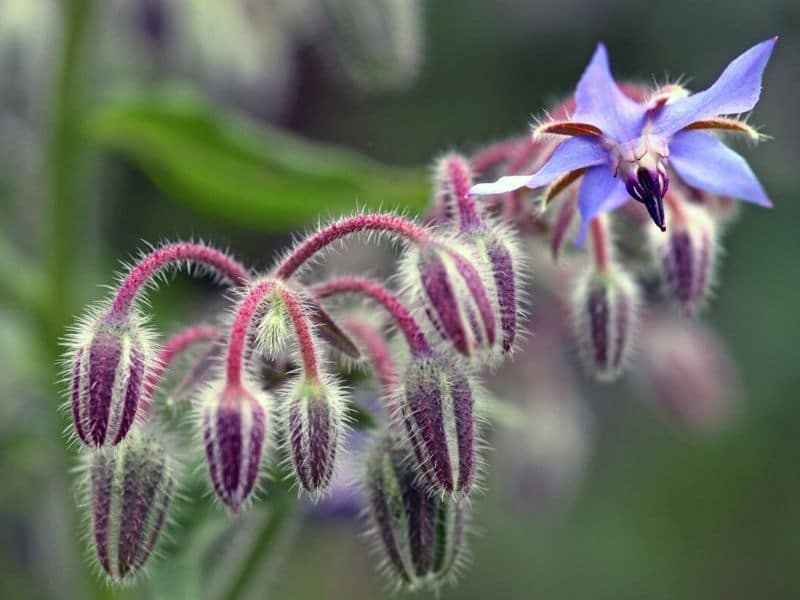
The Borage plant is characterized by star-shaped flowers that have black anthers that protrude from them during the summer months. These plants tend to grow two to three feet tall. The flowers are generally a sky-blue to medium-blue color, although some variants of the plant have pink or white flowers.
The Borage bush has numerous leafy branches, and the stems are hollow, which makes them rather fragile. The Borage stems are covered with stiff hairs that are white in color. The gray-green leaves are also covered in hairs.
Varieties
There is one main species of Borage, but it has some variety, largely in the colors of flowers that it produces. An example is Borage Alba, which is also known as white borage.
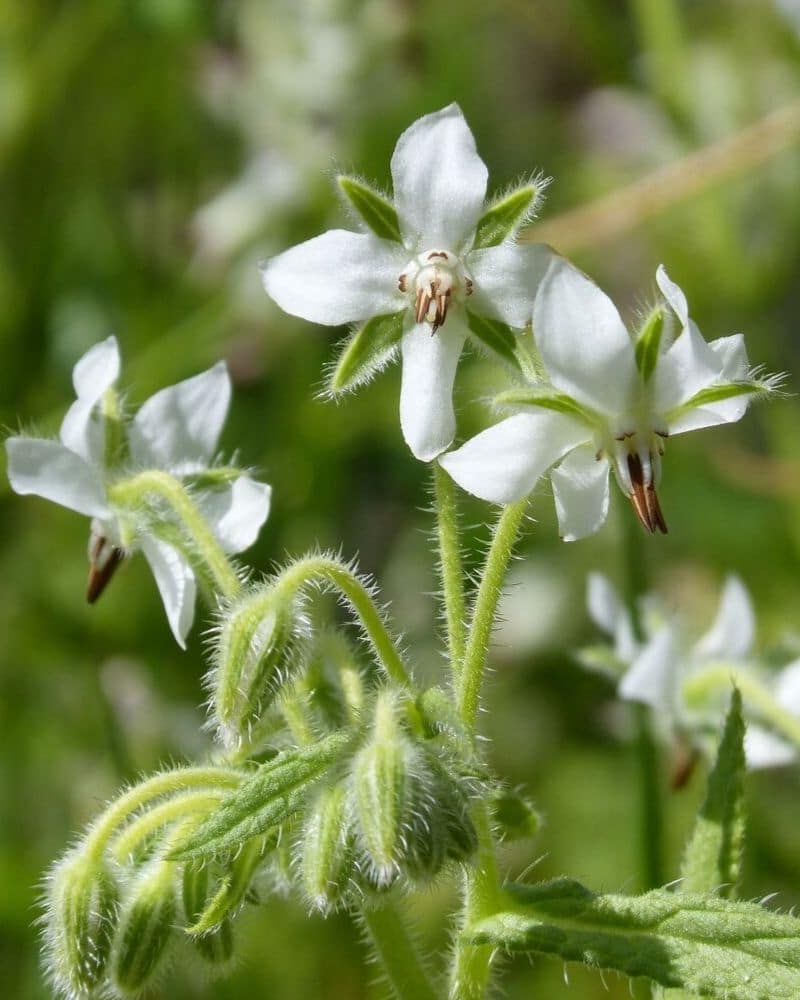
This plant features intensely white blooms, and the stalks tend to be a little sturdier. Alba blooms later in the season than Common Borage, which is the regular blue variant.
Growing Season and Region
In the United States, Borage is hardy through to zone 6, with a temperature of 4 degrees Fahrenheit. The plant is originally from Aleppo, although it is now found in gardens worldwide, including the United Kingdom and the United States. You should plant borage generally during March and April.
How to Grow Borage Plants
Water
Borage plants require regular watering to maintain evenly moist soil, particularly during dry periods. Water deeply once or twice a week, allowing the top inch of soil to dry between waterings.
Avoid overwatering to prevent waterlogged conditions, which can lead to root rot. Mulching around the base of the plants can help retain soil moisture and suppress weed growth.
During hot weather, borage may need more frequent watering to prevent wilting. Monitor soil moisture levels and adjust watering accordingly to ensure optimal growth and flowering throughout the growing season.
Soil
Borage (Borago officinalis) can thrive even in dry, nutrient poor soil. However, it prefers a moderately moist, well-drained soil. Borage can tolerate a fairly wide soil pH range (4.5–8.5), although it favors a slightly acidic soil.
To enhance soil nutrition, consider amending with organic matter, such as compost. This will provide your delicate blue flowers with essential nutrients.
Fertilizer
Borage is a relatively low-maintenance plant that doesn’t require heavy fertilization. However, you can incorporate compost or a balanced fertilizer into the soil before planting to provide nutrients.
Avoid excessive nitrogen fertilizers, as they can promote lush foliage growth at the expense of flower production.
Sunlight
Planting borage in full sun to partial shade is ideal. They prefer at least 6 to 8 hours of sunlight daily to promote healthy growth and abundant flowering. Providing some afternoon shade in regions with hot summers can help prevent the plants from becoming stressed or overheated.
However, in cooler climates, borage can tolerate full sun without issue. Overall, aim to place borage in a location where it can receive ample sunlight to ensure optimal development and blooming.
Pruning
Regular deadheading (removing spent flowers) can prolong the blooming period and encourage continuous flower production. Prune borage plants as needed to maintain their shape and prevent them from becoming too leggy. You can also pinch back the growing borage tips to promote bushier growth.
Pests and Diseases
Borage is relatively resistant to pests and diseases, but occasional issues may arise. Watch out for common garden pests such as aphids, caterpillars, and spider mites. Insecticidal soap or neem oil can help control minor infestations.
Proper spacing, adequate airflow, and avoiding overhead watering can reduce the risk of fungal diseases such as powdery mildew.
Propagation
To propagate Borage plants, begin by collecting mature plant seeds from the flower heads once they have dried. Prepare a well-draining seed-starting mix in small pots or trays.
Sow the borage seeds thinly on the surface of the soil and lightly cover them with a thin layer of soil. Water gently to keep the soil moist but not waterlogged. Place the pots in a warm, sunny location or under grow lights.
Seedlings should emerge within 1-2 weeks. Once the seedlings have developed several sets of true leaves, they can be transplanted into larger containers or directly into the garden bed.
Uses
Borage has a long history of culinary and medicinal use. This makes it a valuable addition to any garden, not just for its beauty but also for its usefulness. The leaves and sky blue flowers are both edible plants, rich in nutrients, and can be consumed fresh or dried.
In traditional herbal medicine, borage is valued for its anti-inflammatory and diuretic properties. It is often used to make herbal teas or infused oils. Use caution when consuming borage, as some individuals may be allergic to the hairs on the leaves and stems.
FAQs
Does borage want full sun?
Yes, borage thrives in full sun and prefers at least 6-8 hours of direct sunlight per day.
What are common problems with borage?
Common problems with borage include powdery mildew, root rot from overwatering, aphid infestations, and poor growth in heavy, poorly drained soil.
How long do borage flowers last?
Borage flowers typically last for several weeks, usually from late spring to early fall, depending on growing conditions and climate.
Can borage be grown in pots?
Yes, borage can be grown in pots or containers, provided they have sufficient space for root development and good drainage. Choose a pot that is at least 12 inches deep and wide to accommodate the plant’s vigorous growth.
Up Next:
References
The A-Z of Garden Flowers. Murdoch: 2005.
Close
Photo credit: PommeGrenade&makamuki0/pixabay.com and PantherMediaSeller/depositphotos.

